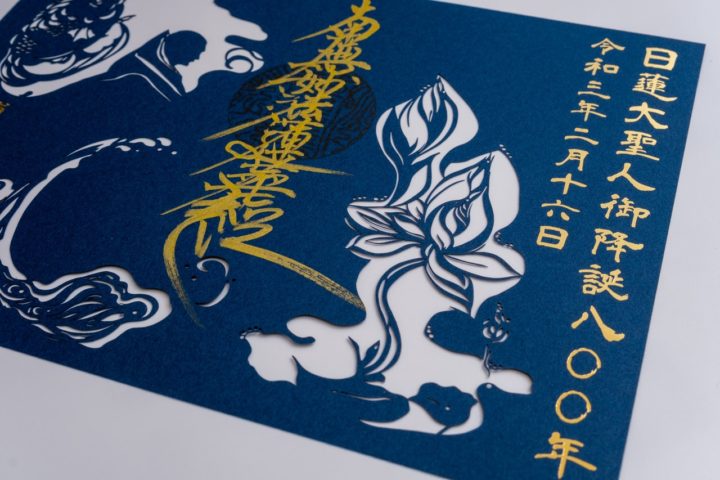
Ladies and gentlemen, are you familiar with ‘Goshuin’? It’s somewhat like something you receive at temples or shrines, right? Isn’t that the extent of what most people think?
What exactly is a ‘Goshuin’ in the first place? It’s not just any stamp, what is its charm? If you go out for a walk for good fortune, you might start increasing your luck from today.
What exactly is a Goshuin?
Shuin are stamps primarily pressed at Japanese shrines and temples mainly for worshippers, as well as the imprint made by such stamps. As an honorific, they are also called Goshuin (from Wikipedia ‘Shuin (Shrines and Temples)’).
Goshuin serve as proof of visiting shrines and temples, similar to stamps collected in a stamp rally. However, instead of stamping it yourself, it is stamped by the staff, Shinto priests, or Buddhist monks of the shrine or temple.
As it is a proper religious practice, it is considered polite to receive them not as souvenirs or memorabilia, but with the same reverence as one would for talismans or amulets.
The History of Goshuin
Originally, it seems that the practice of receiving written proof of temple visits, which began in the Nara and Heian periods, spread to the general public and became popularized during the Muromachi and Edo periods.
It is said that the increase in opportunities for the general populace to visit shrines and temples, due to the development of highways during the Edo period (notably, the practice of collective pilgrimages to Ise Grand Shrine, known as ‘Oisemairi’), had an influence.
However, at that time, it seems there wasn’t such a term since the general populace didn’t originally have access to shuin themselves.
The Format of Goshuin
As mentioned above, the primary role of a Goshuin is to serve as proof of pilgrimage.
Generally, it consists of white paper with the name of the principal deity, the name of the shrine or temple, and the date written in ink, along with a stamp. However, there is no rule that it must be exactly like this. Therefore, you might see stickers that indicate the current season, or the paper itself might be processed (oh?) to represent the four seasons or religious events.
Some are so elaborate and colorful that they resemble paintings, showcasing a diversity that goes beyond the traditional image of Goshuin.
The translation is “Famous Goshuin
At Ryusenji, the Yakuyoke Kaiun Daishi (Great Master of Warding Off Evil and Bringing Good Fortune) located in Kumagaya City, Saitama Prefecture, they distribute goshuin (temple seals) in a cut-out design according to the season. I have actually visited and received one myself. The design, featuring motifs of the moon and stars with cut-out details and the temple’s seal pressed in gold foil, is very artistic.
It seems that there are temples and shrines that dislike such goshuin, but there are increasingly more places that are innovating their goshuin with the hope of “tying bonds” by becoming a reason for people who usually have no connection to temples and shrines to visit, similar to Ryusenji.
To the Creation of Paper-Processed Goshuin
Now, as mentioned earlier under the format section, there was a phrase “processing paper,” right? You haven’t forgotten that Tokyo Shiki Co., Ltd. is a paper processing company, have you?
Through laser processing, we have connected with various papercutting artists, and with an understanding of religious ceremonies, we sought someone who could join us in creating goshuin imbued with soul.
With the help of Naru Miyamoto, who creates “Katana-e,” papercut artwork made with a single cut using a small Japanese steel knife, we were fortunate to have the opportunity to collaborate on the goshuin of Chokyu-san Enzoji Temple, a Nichiren sect temple in Urawa, due to our connection.
The Goshuin of Enzoji Temple

Enzoji Temple is a Nichiren sect temple that was founded in 1462 by the Buddhist priest Nichien Shonin of Yuikyo-in. Originally built in Katsuura City, Chiba Prefecture, it was relocated to Urawa around 1897.
This year also marks the 800th anniversary of the birth of Nichiren Shonin, who spread the teachings of the Nichiren sect, and very important religious services will be held. Because it is such a significant period, there was a desire to create something that expresses the achievements and life of Nichiren Shonin, as well as the Lotus Sutra.
Points to Note When Collecting Goshuin
Goshuin are inherently attractive, which tends to make “collecting” them an end in itself.
However, it is essential to remember that these are primarily proof of pilgrimage, and the important aspect is to establish a connection with the gods and Buddhas through it. Therefore, it goes without saying, but let’s refrain from just receiving goshuin without actually visiting and worshipping.
